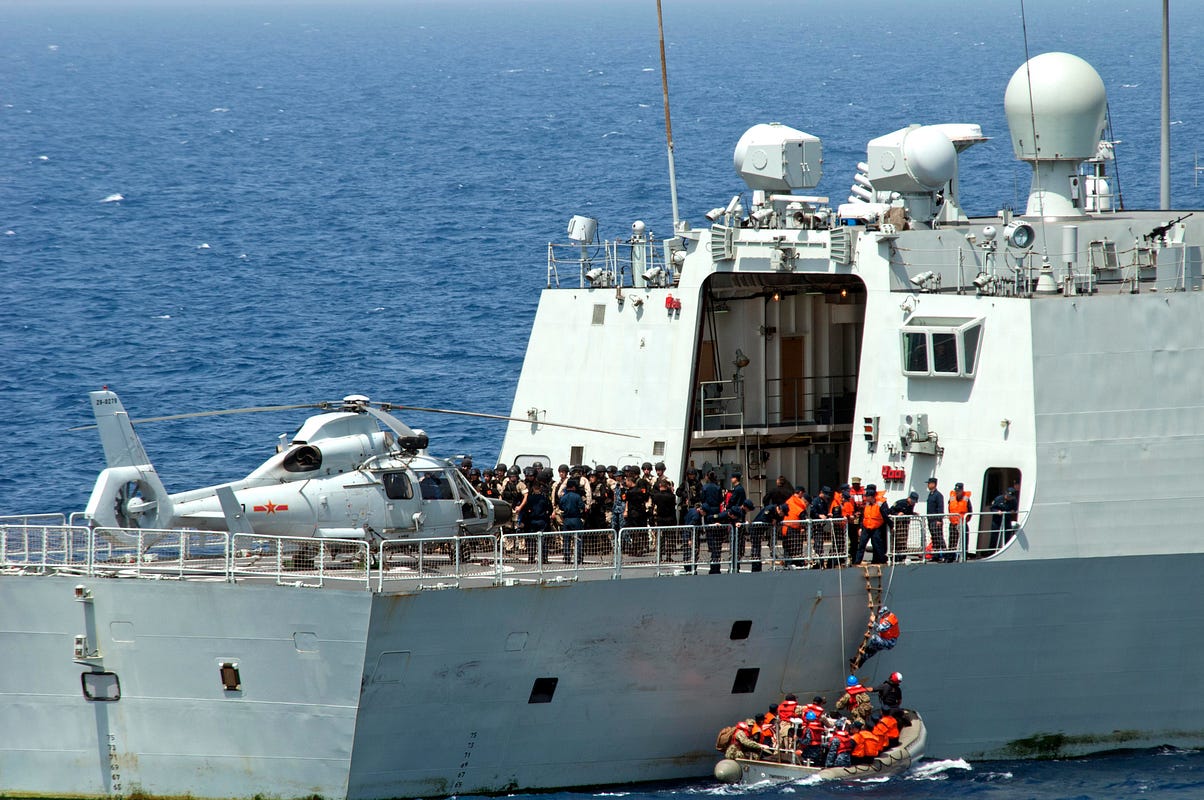The security establishment is firmly in the driving seat. It is calling the shots with respect to the multiple internal security challenges facing the nation. Caught in a political quagmire, the civilian government has ceded the national security space to the military due to its weak leadership. Prolonged sit-ins by the PTI/PAT in Islamabad and massive public meetings elsewhere have caused governance paralysis.
What went wrong, and so soon after the euphoria of the transfer of power from the fragile PPP-led coalition to the PML-N’s numerically strong government? The answer essentially lies in the nature of the civil-military relationship and its impact on the national security policy including internal security challenges. Since the ’80s the military establishment has had primacy over nuclear doctrine, foreign policy ~ especially where it relates to the United States, India and Afghanistan ~ and the use of militant proxies to further regional policy objectives.
Mr Nawaz Sharif was twice dismissed in the ’90s at the behest of the military establishment when he attempted to tread the forbidden path. The basic mistake he made each time was his failure to promote good governance: cronyism, nepotism and patronage took precedence over merit, integrity and professionalism.
Moreover, given the firmly entrenched military-led national security narrative, he should have shown the sagacity to engage in a national dialogue to nudge the military leaders towards a peace-driven, economically viable and democratic vision for the future. He failed to do so. This proved his undoing in the past and he finds himself in difficulty yet again for not having learnt his lesson.
The civilian government’s inaction on vital security issues has further compromised its authority.
Just barely into the second year of his third stint, his government appears like a rudderless ship facing violent waves of discontent. The scorecard of his mistakes tells a sordid tale.
One, his selection of cabinet of ministers was poor and incomplete: he gave himself the portfolios of defence and foreign affairs in order to directly deal with matters of concern to the security establishment. Carefully selected full-fledged ministers in these key policy fields would have provided a cushion in the decision-making process.
Two, he failed to appoint a professional national security adviser, giving the task to a political loyalist whose attention is divided between foreign affairs and national security matters. In order to avoid appearing before the Supreme Court, the additional charge of the defence ministry was given to another loyalist who is already responsible for dealing with the worst-possible energy crisis facing the nation.
Three, the National Security Committee, comprising relevant stakeholders from the security and intelligence agencies, has not been used as an effective institutional mechanism to formulate a comprehensive national security policy. Rather than holding regular meetings to develop policies at the institutional level, frequent one-on-one meetings between the prime minister and the army chief leave an impression that all is not well on the civ-mil front.
The newly established national security division under an able diplomat has remained redundant so far. There is no advisory council on national security issues to source ideas from a wide range of national experts. As a result, a cabal of serving security and intelligence officials lead this vital security arena. Moreover, parliamentary oversight on national security issues has been totally ignored and the resultant lack of transparency gives rise to conspiracy theories in the media.
Four, the first-ever National Internal Security Policy launched with great fanfare has not even been partially implemented. The National Counter Terrorism Authority has remained dormant since 2009 as the government has not been able to select a senior police officer as its chief. Moreover, the interior ministry wants to control Nacta, although legally it is supposed to work under the prime minister.
An intelligence directorate was also required to be established under Nacta for coordination between the federal and provincial security agencies for launching intelligence-based operations, but this has not happened for lack of ownership by the security establishment. A police-led CT task force at Islamabad has not been raised so far.
These failures of the civilian governments have led the military to fill the resultant gaps by not only leading intelligence-based operations across the country but establishing their own CT centre at Kharian for an institutional response to combating terrorism and militancy.
Five, the federal government and its agencies have failed to support the Balochistan chief minister in tackling the missing persons issue and other Baloch grievances. The kill-and-dump policy has not been abandoned by the private militias and their alleged patrons in the security agencies. In fact, a new round of tit-for-tat killings and attacks between the insurgents and security forces appears to have started with bodies of kidnapped Baloch activists being dumped near Panjgur and Turbat.
Six, the Karachi operation, initiated enthusiastically by the prime minister and the interior minister has practically been handed over to the provincial government. The prime minister could not post a provincial inspector-general police of his choice. With lukewarm support by the provincial government, the Rangers are clearly handicapped as a civil armed force representing the federal government and military establishment. Police too is paying a heavy price in terms of casualties due to lack of equipment and technology that the federal government could have provided.
In the absence of a law-enforcement approach, military means of eliminating criminals are reflective of a myopic approach to tackling organised crime. Even this strategy has failed to substantially reduce target killings and sectarian terrorism.
The abdication of civilian authority in national security matters can be fatal for democracy. Instead of empty words spoken in parliament, it is time to show leadership by strengthening institutions and promoting good governance.
The constitutional commander-in-chief has to prove his mettle. It is time to lead the nation and not sulk under the khaki shadow.






